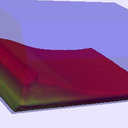Fabrication and evaluation of a new composite composed of tricalcium phosphate, gelatin, and Chinese medicine as a bone substitute.
Keywords
Coimriú
This study investigates the biological effects of traditional Chinese medicines on the activities of bone cells using rat bone cells. Then, a mixture of a GGT composite, that is, a novel biodegradable composite containing genipin crosslinked gelatin and tricalcium phosphate, and traditional Chinese medicine (TCM) was prepared as a GGT-TCM composite. A cultured neonatal rat calvarias organ was used to measure the potential of GGT-TCM composite for use in promoting the regeneration of defective bone tissue. The mitochondria activity of the bone cells following exposure to various concentrations of crude extracts of five herbal Chinese medicines was measured by colorimetric assay. Biochemical markers, such as alkaline phosphatase (ALP) and tartrate-resistant acid phosphatase (TRAP) titers were analyzed to evaluate the activities of bone cells. Finally, we examined the organ culture units, which were maintained in cultured medium for 5 weeks. Morphology of tissue was observed, and the quantitative evaluation of the regenerated bone was determined. In a bone cells culture experiment, adding Cuscuta chinensis Lam. (TCM-5) to the bone cells culture clearly promoted the proliferation and differentiation of the osteoblasts from their precursor cells; but the reduced amount of TRAP indicated that the medicine significantly inhibited the osteoclasts activities. Opposite bone cell responses were observed when Loranthus parasiticus Merr. (TCM-3) and Achyranthes bidentata Bl. (TCM-4) were added to the bone cells culture. Eucommia ulmoides Oliv. (TCM-1) and Dipsacus asper Wall. (TCM-2) potentially influence the proliferation and differentiation of the osteoblasts from their precursor cells, but they did not affect the osteoclasts activities. The finding from the organ culture indicated that Chinese medicine effectively increased the rate of tissue regeneration of damaged bones.


